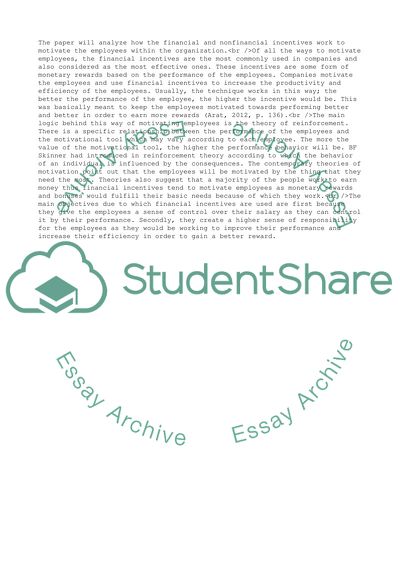Cite this document
(The Effects of Non-Financial and Financial Incentives Essay Example | Topics and Well Written Essays - 1500 words, n.d.)
The Effects of Non-Financial and Financial Incentives Essay Example | Topics and Well Written Essays - 1500 words. https://studentshare.org/business/1833864-analyse-the-effects-of-non-financial-and-financial-incentives-which-can-be-offered-to-motivate-employees-using-real-examples-from-companies
The Effects of Non-Financial and Financial Incentives Essay Example | Topics and Well Written Essays - 1500 words. https://studentshare.org/business/1833864-analyse-the-effects-of-non-financial-and-financial-incentives-which-can-be-offered-to-motivate-employees-using-real-examples-from-companies
(The Effects of Non-Financial and Financial Incentives Essay Example | Topics and Well Written Essays - 1500 Words)
The Effects of Non-Financial and Financial Incentives Essay Example | Topics and Well Written Essays - 1500 Words. https://studentshare.org/business/1833864-analyse-the-effects-of-non-financial-and-financial-incentives-which-can-be-offered-to-motivate-employees-using-real-examples-from-companies.
The Effects of Non-Financial and Financial Incentives Essay Example | Topics and Well Written Essays - 1500 Words. https://studentshare.org/business/1833864-analyse-the-effects-of-non-financial-and-financial-incentives-which-can-be-offered-to-motivate-employees-using-real-examples-from-companies.
“The Effects of Non-Financial and Financial Incentives Essay Example | Topics and Well Written Essays - 1500 Words”. https://studentshare.org/business/1833864-analyse-the-effects-of-non-financial-and-financial-incentives-which-can-be-offered-to-motivate-employees-using-real-examples-from-companies.


